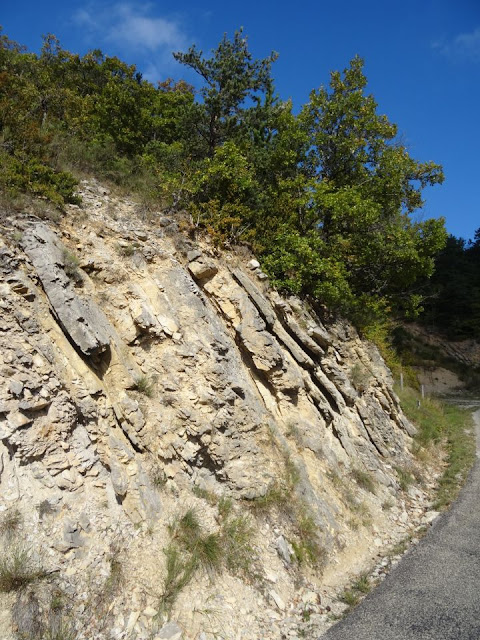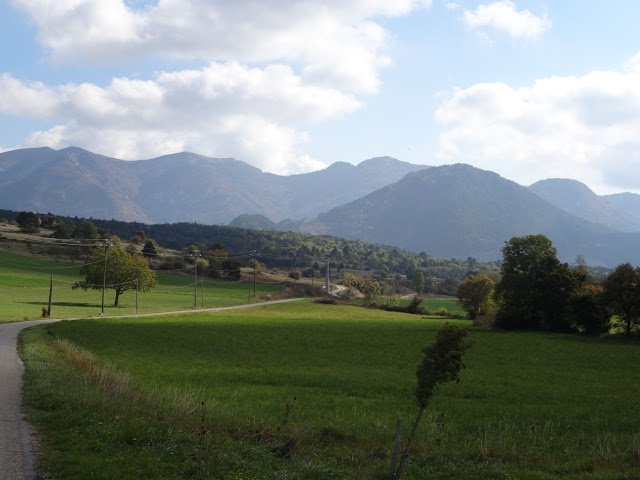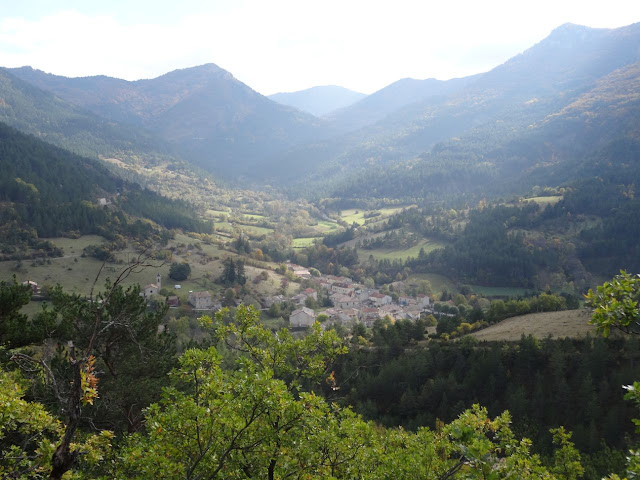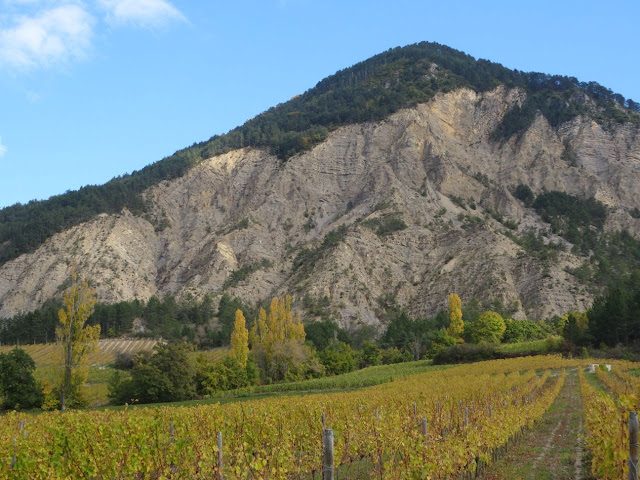My last day here for several weeks, and with fairly tired legs (I'll have done about 450 miles on the bike in eight days) and other stuff to do, I plumped for a simple ride to Lesches-en-Diois (scene of the perennially brilliant fireworks of 15 August), ascending the way I've only been up in a car before and descending into Beaurières. A simple 50-mile lasso-type route, and one with a one or two more interesting geological features.
The first is just after Luc-en-Diois, at the unmissable feature of Le Saut de la Drôme (the Jump of the Drôme) and Le Claps. Both are the result of a major event in the 15th century, when a great chunk of one side of a mountain just slid down off the mountain, creating a 5-hectare (12.5 acre) lake, as well as the aftermath of the waterfall and truly enormous boulders scattered you can see today. The lake (now gone) had many battles fought over it, in an area where water rarely collects naturally, thanks to the property of limestone.
The other bits of exposed geology were on the climb up to and descent from Lesches (at 1023m), and lastly on my little detour on the way home towards Châtillon, where I compared the fragile strata near Châtillon with the rather more weather-rounded features of the Glandasse. I'm sure there have been and will be further massive events in its geological history. But I'm under the impression that its implacable face changes at a slower rate than some of the other formations round here.


































































